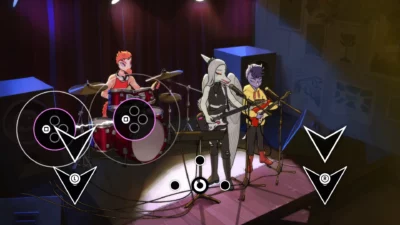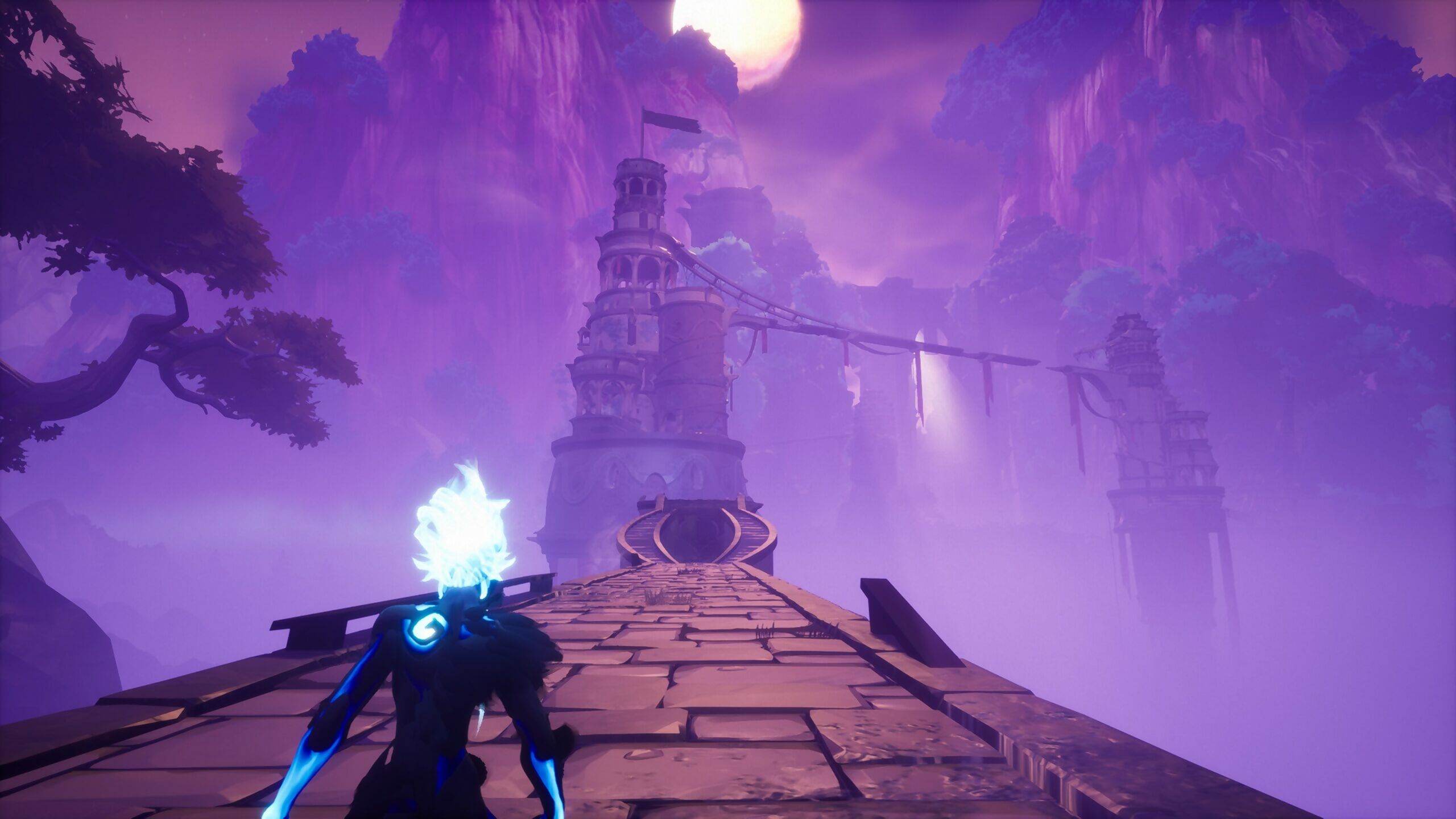
Strayed Lights mixes the emotion of Journey with the precise combat of Furi or Sekiro, but the fusion isn’t always a dazzling one. Our review:
Strayed Lights begins with your birth, ejecting from some sort of seed pod into a quiet metallic temple. Like a new-born calf, your impish avatar starts to walk immediately, tottering through halls and corridors that pulse with life-giving tubes. Eventually you meet your reflection in a crystal wall, which morphs into an evil shadow creature, steals an orb of light from inside you, encases you in black armour, and forces you to defend yourself.
In these opening scenes, this compact third-person action adventure thus establishes a covenant of mystery and mysticism. Throughout, it retains a wordless distance, expressing its story through location, animation and colour. Soon you’ll stride out – now grown up – into a great cavern that branches into distinct biomes, each perhaps symbolising a stage of life or facet of civilisation, but you’ll have to draw your own conclusions about that. The only thing that’s certain is that these excursions lead to scraps with dark beings and showdowns with corrupted brethren who need beating back to their senses.
There are disparate indie sensibilities at work here, then, which pair the emotional ride of Journey with the exacting combat patterns of Furi. Yet Strayed Lights struggles for equilibrium – if that’s even possible with such a mix – leaving both sides of the equation feeling somewhat underfed. You could say that these opposites reflect the inner conflict in your character, apparently torn between light and dark, but neither side has the magnetism required to wrestle the other for your attention.
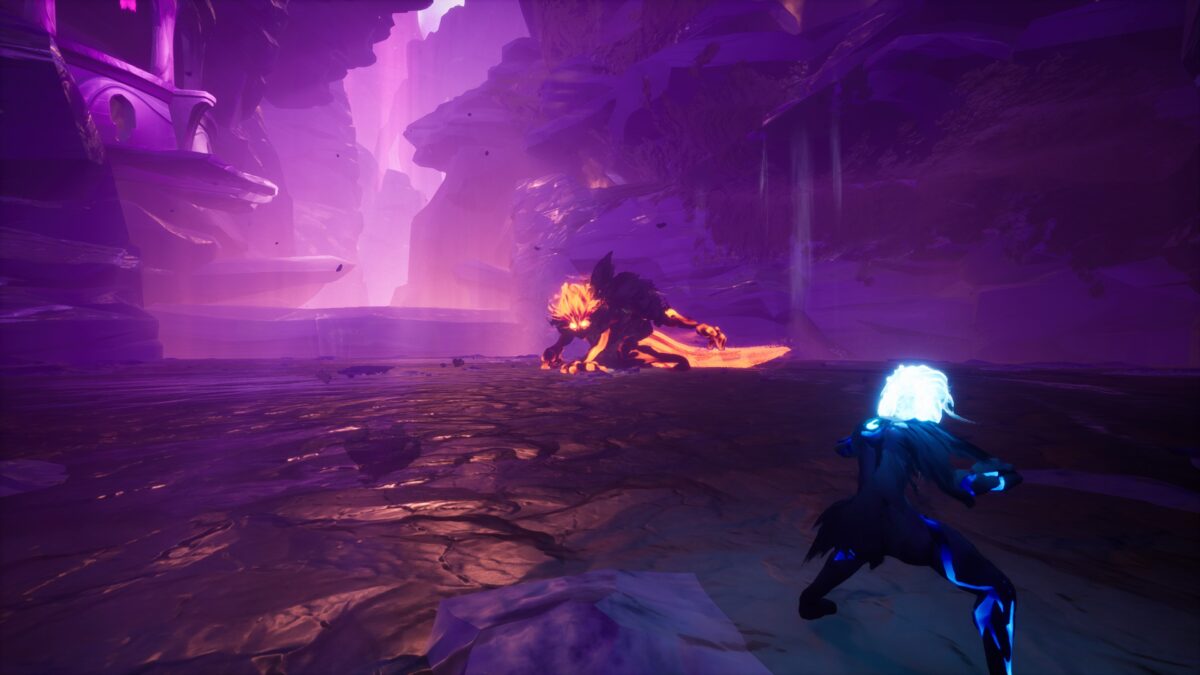
Credit: Embers.
As far as exploration goes, there’s great promise in landscapes that bulge with the wonder of classic sci-fi illustrations. The strange tech of your birthplace gives way to a warbling blue jungle, playgrounds of ancient ruins, and other delights. As you enter a new area from the connecting hub, the camera forces itself down behind you for a moment so you can absorb the fresh view, and it’s always a treat. Pepper-pot towers on the horizon, blades of sunlight piercing the canopy – all are worth savouring.
Their layouts also often tantalise and prick the imagination: that way a path winding into a strange stone circle emitting an unnatural light; the other way an enormous tree branch snaking off to who knows where. But invariably, one leads to the next battle on the road to progress, while the other takes you to a dead end containing one or two glowing circles that help power up your character. Rarely do you have to exercise any skill or smarts to reach these collectibles, and most ‘secrets’ are about as cunning as a child standing behind a curtain in a game of hide and seek.
Yet Strayed Lights is no laidback jaunt – it merely places its challenges elsewhere, in regular close combat with shadowy fiends. You learn to parry before you can attack here, and with a nod to Sekiro: Shadows Die Twice, the surest path to victory is to keep repelling whatever violence swings your way. Each timely block builds up an energy bar, and once it’s full you can unleash its pent up force to deliver a coup de grace. Complications come in the form of a colour matching system, whereby your foe’s body turns either red or blue with each strike and you toggle your own hue to fit. Every time you parry a blow when you’re the same colour as your assailant, your health refills a little.
That regeneration can be crucial too, since it’s all too easy to fluff a series of parries and find yourself near death. Then again, you’re more likely to fluff in the first place because trying to colour match while timing your blocks is a tricky concept to juggle and track once blows start raining down. Even more so when enemies start lacing their combos with unblockable purple strikes that have to be dodged, some lighting up large patches of the arena with destructive energy.
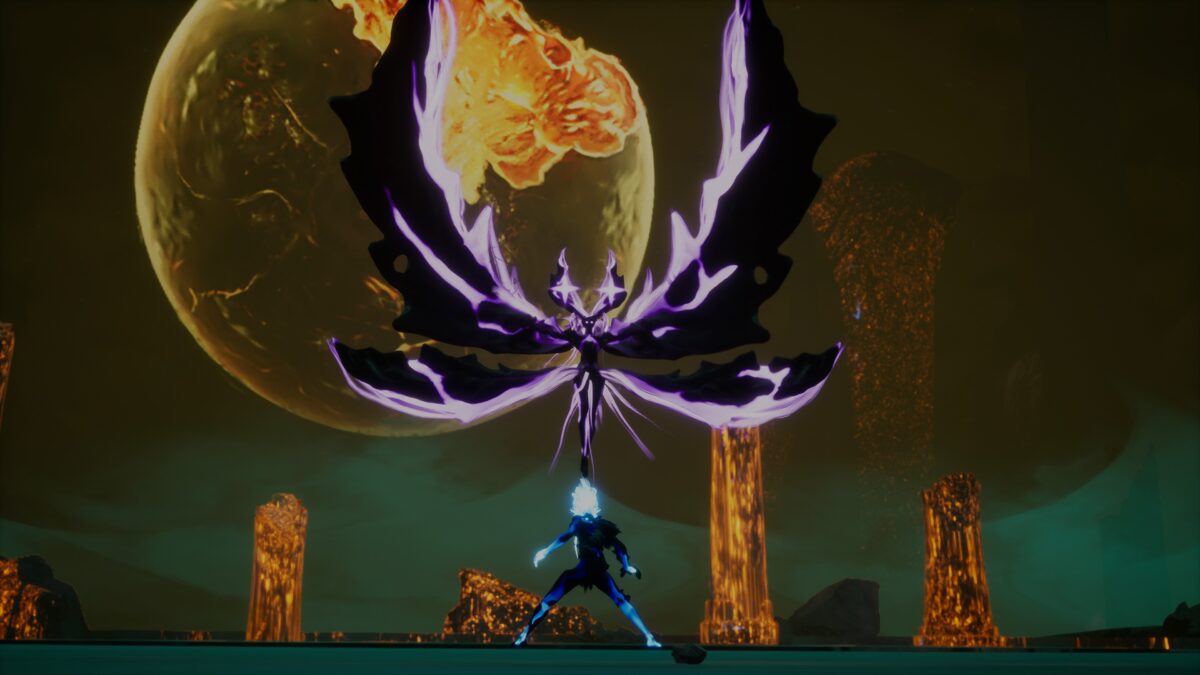
Credit: Embers.
What Strayed Lights is really asking you to do, then, is to memorise patterns, like a rhythm action game without the music. Each kind of foe is equipped with a handful of combos, so after you’ve met a few you’ll be ready to make the required colour switches in the midst of a string of punches and swipes. And when you do complete a perfect sequence, particularly during the marvellously choreographed boss fights, after patiently learning their timings and tells, the buzz of achievement is not to be sniffed at.
Except, while it’s quite thrilling when it does come together, a lot of the time it doesn’t. Even after some bedding in time, the mix of parrying, dodging and colour switching remains just unintuitive enough to ensure that single mistakes often compound as your rhythm is thrown off and muscle memory short circuits. The timing of parries also doesn’t have the consistency required for the system to be truly fulfilling, an irritation only exacerbated by attacks with unusual wind up animations that punish you for reacting on instinct.
Indeed, it says something about the game’s confidence in its parrying systems, perhaps, that the longer it goes on, the more it provides you with alternative methods of winning. Along with your own offensive strikes you can unleash special powers that stun your opponent or override the colour system temporarily, while those glowing circles improve your energy absorption efficiency. Combined with the generous health gain you receive for each same-coloured parry, you can bumble through most fights with only sporadic defensive success, which is a relief, but decidedly less satisfying.
Outside of its splendid visuals (and audio – see Highlight below), then, Strayed Lights rarely reaches notable heights. Its expanses are often a touch sparse, offering battles against the same handful of enemy types over and over, and only occasionally moulding its impressive nature and architecture into compelling stories.
After being born into such a curious world, it’s disappointing to discover that not much within makes you feel truly alive.
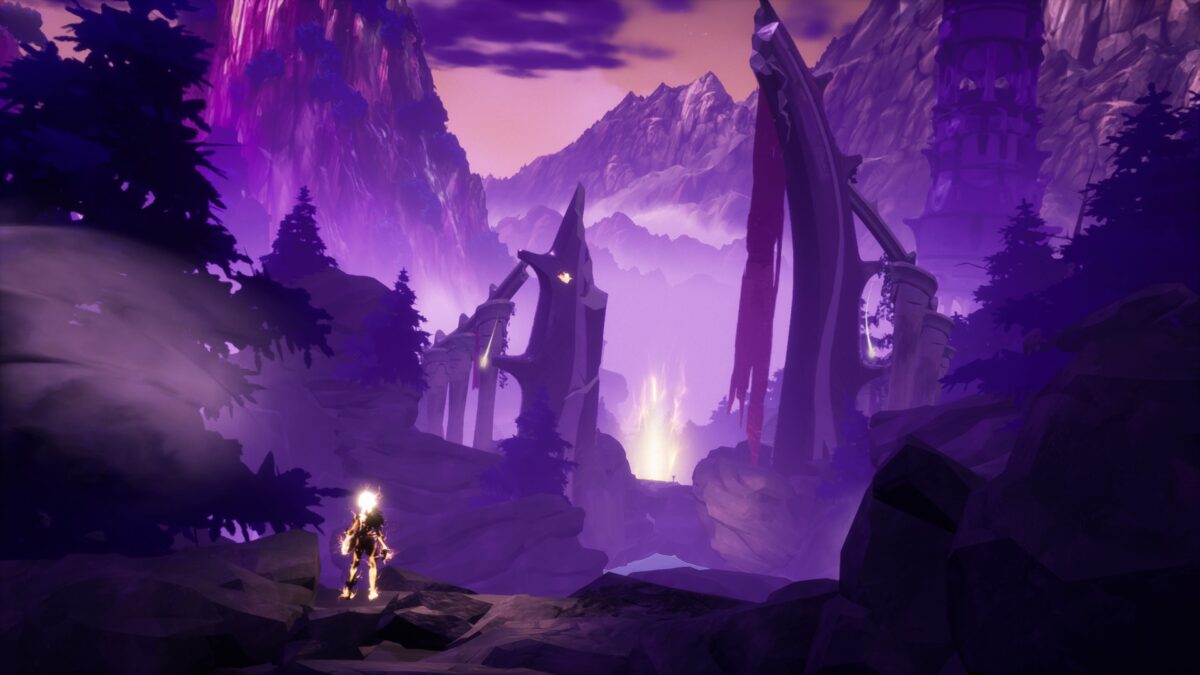
Credit: Embers.
Highlight
One of the reasons Journey comes to mind when playing Strayed Lights is that both games share a composer in Austin Wintory. As in many of his game scores, Wintory’s work here subtly pricks at the emotions, with quiet pianos and strings accentuating the highs and lows of your travails.
Verdict
Presentation aside, the competing indie philosophies in Strayed Lights never really shine together.


